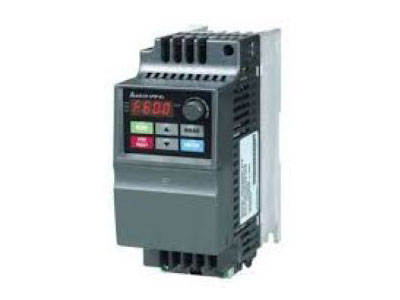Key Takeaway
Variable Frequency Drives (VFDs) convert AC to DC to achieve precise control over motor speed. Here’s how it works: AC power from the mains is first converted to DC inside the VFD. This DC voltage is then manipulated to create variable-frequency AC output. By adjusting the frequency and voltage of the output, VFDs can smoothly accelerate and decelerate motors. This control reduces mechanical stress, extending motor lifespan and improving overall performance. Essentially, converting AC to DC within VFDs enables efficient speed regulation, enhancing operational efficiency and minimizing wear and tear on machinery.
Power Conversion Process in VFDs
The power conversion process in VFDs starts with the incoming AC power. This AC power, typically from a standard industrial supply, is first rectified into DC power using a rectifier circuit. This rectified DC power is then smoothed out using capacitors to provide a steady DC voltage. Following this, an inverter circuit converts the DC back into a controlled AC output, with adjustable frequency and voltage.
This conversion process allows VFDs to control the speed of AC motors by varying the frequency and voltage of the power supplied to the motor. By doing so, VFDs provide precise motor control, improving efficiency and performance in various industrial applications.

Benefits of AC to DC Conversion
Converting AC to DC in Variable Frequency Drives (VFDs) offers significant advantages, particularly in industrial applications. One key benefit is enhanced motor control precision. By converting AC power to DC and then back to controlled AC, VFDs enable precise adjustment of motor speeds. This capability is crucial for applications like conveyor systems, pumps, and fans, where varying speeds are essential.
Another major advantage is improved energy efficiency. VFDs optimize energy consumption by adjusting motor speeds according to the required load, rather than running continuously at full speed. This not only saves energy but also reduces operational costs and extends the lifespan of motors by minimizing wear and tear.
Overall, the AC to DC conversion in VFDs enhances operational flexibility, reduces energy usage, and prolongs equipment life, making them indispensable in modern industrial settings seeking efficient and sustainable solutions. Understanding these benefits is fundamental for engineers entering the field, ensuring they can leverage VFD technology effectively to optimize performance and achieve operational goals.
You May Like to Read
Technical Aspects of the Conversion Process
Converting AC to DC in Variable Frequency Drives (VFDs) involves intricate technical processes crucial for industrial engineers to grasp. The conversion starts with the rectifier, which transforms incoming AC power into DC using components like diode bridges or thyristors. This DC voltage, however, often contains ripples that need smoothing out, achieved by smoothing capacitors to ensure a stable DC output.
The next critical component is the inverter, which plays a pivotal role in the VFD operation. Utilizing power transistors or Insulated Gate Bipolar Transistors (IGBTs), the inverter converts the steady DC back into AC power. What distinguishes the inverter’s function is its ability to control the frequency and voltage of the output AC through rapid switching of these transistors. This process, governed by advanced algorithms, enables precise regulation of motor speed and torque in various industrial applications.
Common Applications Requiring Conversion
VFDs, with their ability to convert AC to DC power, find extensive use across diverse industrial applications. One primary application is in conveyor systems, where VFDs enable precise speed control based on varying loads and operational needs. This capability not only enhances efficiency but also prolongs the lifespan of conveyor components by reducing wear and tear.
Pumps and fans represent another critical area benefiting from VFD technology. By adjusting motor speeds to match demand, VFDs optimize energy consumption, resulting in significant savings without compromising operational effectiveness. In manufacturing environments, VFDs play a pivotal role in processes requiring meticulous motor control, such as CNC machines and robotic systems. Their flexibility and efficiency make them indispensable, boosting overall productivity while aligning with sustainability goals.
Overall, VFDs empower industries to operate more efficiently and sustainably, leveraging their conversion capabilities to meet specific operational demands with precision. For engineers entering the field, understanding these applications underscores the transformative impact of VFD technology in modern industrial settings, emphasizing both practical benefits and strategic advantages for global manufacturing operations.
Challenges and Solutions in AC to DC Conversion
Converting AC to DC in Variable Frequency Drives (VFDs) brings significant benefits but also poses challenges that engineers need to address for optimal performance. One major issue is harmonic distortion, where the conversion process introduces unwanted frequencies that can degrade power quality and efficiency. To tackle this, advanced solutions like active filters or multi-pulse rectifiers are employed. These technologies help mitigate harmonic distortions, ensuring cleaner power output and compliance with regulatory standards.
Another critical challenge is managing heat generated during the AC to DC conversion. Efficient thermal management strategies such as heat sinks and dedicated cooling systems are essential to dissipate heat effectively and maintain VFD performance over time. Regular maintenance and monitoring play crucial roles in detecting and addressing potential issues early, preventing equipment failures and ensuring uninterrupted operations.
Conclusion
In conclusion, the conversion of AC to DC in VFDs is not just a technical necessity but a fundamental process that enables precise motor control, energy efficiency, and adaptability in various industrial applications. Understanding this conversion process helps engineers appreciate the intricate workings of VFDs and leverage their capabilities to optimize industrial operations. The benefits, from enhanced motor control to significant energy savings, underscore the importance of AC to DC conversion in the efficiency and effectiveness of modern industrial systems.
